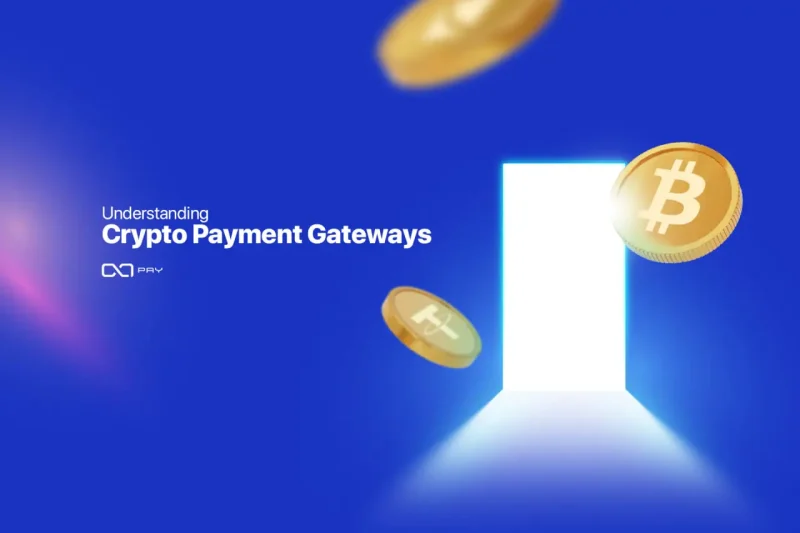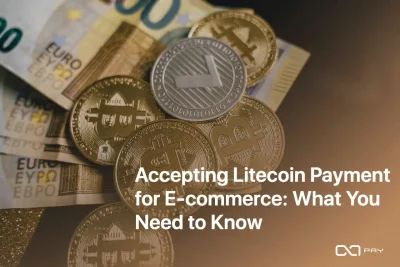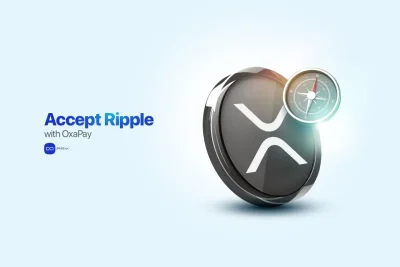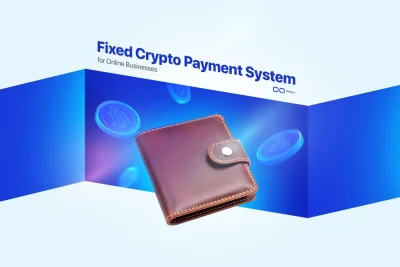As cryptocurrencies gain momentum across global markets, more businesses are exploring ways to accept digital assets like Bitcoin, Ethereum, and USDT as payment. But accepting crypto securely and at scale isn’t as simple as sharing a wallet address. It requires infrastructure that automates blockchain interactions, handles transactions, and ensures reliability. This is where a crypto payment gateway comes in, a specialized tool that simplifies the process. In this guide, we’ll explore what a crypto payment gateway is, how crypto payment gateways work, and why they’re becoming essential to modern commerce.
What Is a Crypto Payment Gateway?
A crypto payment gateway is a service that enables merchants to accept payments in cryptocurrencies such as Bitcoin, Ethereum, USDT, and others. It acts as a technical bridge between the buyer, the merchant, and the blockchain networks.
Instead of managing private keys, exchange rates, or manual address generation, merchants can use a gateway to automate the entire process , securely and efficiently.
Think of it as the crypto equivalent of Stripe or PayPal, but for decentralized currencies.
Understanding how crypto payment gateways work helps clarify why they are essential for modern crypto transactions.
How Does a Crypto Payment Gateway Work?
To understand how crypto payment gateways work, let’s break down the core steps involved in a typical transaction:
Customer Chooses to Pay in Crypto
During checkout, the user selects a cryptocurrency payment option.
Gateway Generates a Payment Invoice or Address
The gateway creates a unique wallet address (or a QR code) for that transaction. In some cases, fixed (static) addresses can also be used.
Customer Sends the Crypto
The user sends the exact amount to the address provided. The gateway monitors the blockchain in real time.
Transaction Verification
The system waits for required confirmations (e.g., 1–6 blocks depending on the coin) to ensure the payment is valid.
Settlement and Callback
Once verified, the payment is marked as complete. The merchant is notified through dashboard updates, webhook calls, or email. Depending on the gateway, the funds can be auto-converted or held in crypto.
Merchant Receives Funds
Funds are credited to the merchant’s crypto balance or converted into a stablecoin or fiat currency, if available.
Key Features of a Crypto Payment Gateway
The following features illustrate how crypto payment gateways work across different business models and use cases:
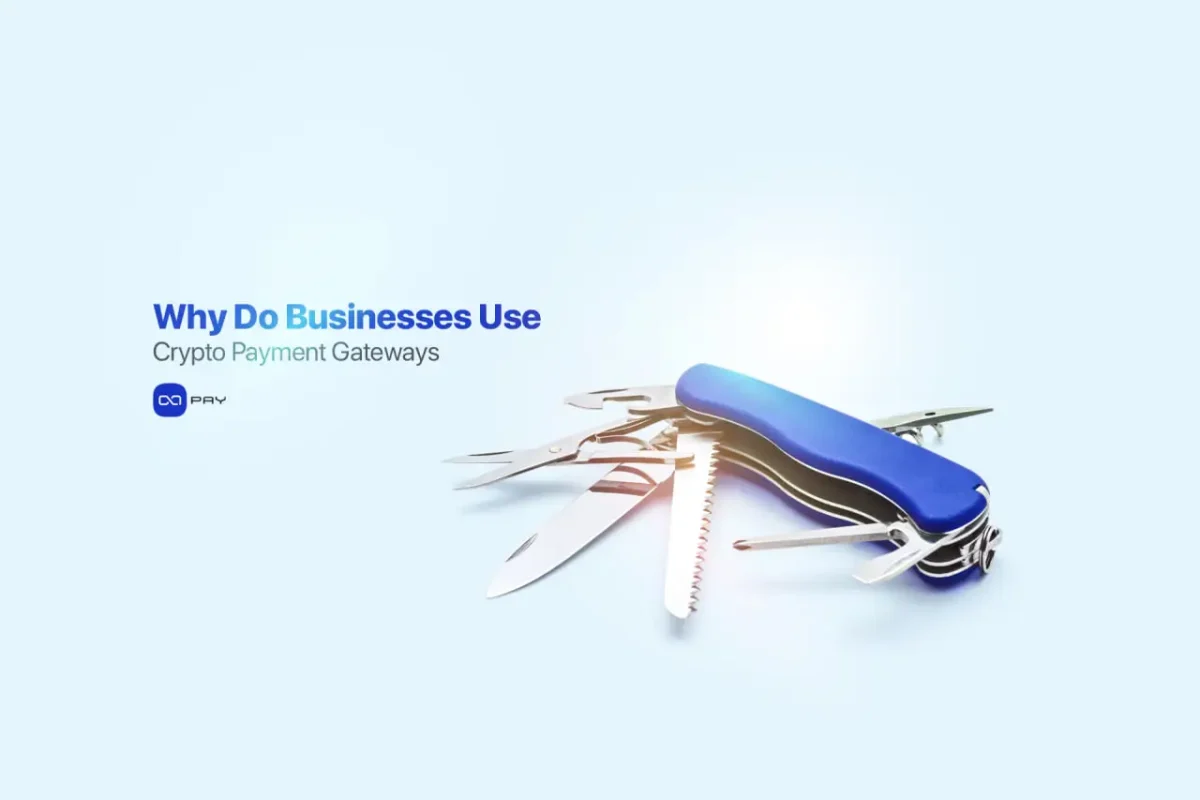
Why Do Businesses Use Crypto Payment Gateways?
Accepting crypto manually may sound simple, just share a wallet address and wait for payment. But in practice, this approach is slow, risky, and hard to manage at scale.
That’s why businesses of all sizes turn to crypto payment gateways, once they understand how crypto payment gateways work to solve these operational challenges.
Automation and Scalability
A gateway automates address generation, payment confirmation, and transaction tracking, removing the need for manual monitoring and eliminating human error.
Real-Time Blockchain Monitoring
Payment gateways monitor the blockchain in real-time, ensuring that every incoming payment is detected, confirmed, and updated in your system.
Professional Invoicing and Branding
With tools like branded invoices, white-label checkout, and customer-facing instructions, gateways help maintain a seamless, trustworthy payment experience.
Exchange Rate Handling
Gateways automatically calculate exchange rates and support multiple coins. You don’t need to manually check prices or worry about volatility during checkout.
Security and Fraud Prevention
Gateways use secure, verified address generation and can integrate IP restrictions, webhook validation, and other protections to reduce fraud risk.
API and Platform Integration
Developers can integrate payment gateways with e-commerce platforms, apps, or custom systems using APIs, plugins, or hosted pages, offering far more functionality than a basic wallet.
Audit and Reporting Tools
With dashboards, transaction logs, and exportable histories, gateways provide full visibility into payment flows for accounting and compliance.
Multi-Currency Support
A good gateway lets you accept many different cryptocurrencies at once and manage them from a single interface, no need to juggle multiple wallets.
In short, a crypto payment gateway simplifies the entire payment process , from generating addresses to confirming payments and notifying your system. It helps you go from a hobbyist crypto setup to a professional payment infrastructure.
Different Types of Integrations
You can integrate a crypto payment gateway into your business through several methods, each designed for different technical setups, customer journeys, and operational needs. Understanding how crypto payment gateways work in various contexts helps determine which integration method is right for your platform.
1. Hosted Payment Page Integration
The simplest method involves redirecting the customer to a secure payment page hosted by the gateway. You don’t need to write any backend code, just generate a redirect link with transaction parameters. This approach is ideal for small businesses, freelancers, or platforms needing quick deployment.
2. Embedded or iFrame Checkout
For a smoother user experience, merchants can embed the gateway interface directly into their website using iFrame or JavaScript. Payments happen inside the same UI, maintaining branding. This setup is useful for SaaS platforms and subscription services.
3. White Label Integration
Offers full control over the front-end design and user journey. Payment requests, address generation, and status updates are handled via API, but the entire interface stays on the merchant’s domain. Best for enterprises seeking brand consistency and direct customer flow.
4. API-Based Backend Integration
Using RESTful API endpoints, developers can create custom logic for generating invoices, tracking payments, issuing refunds, and managing payouts. Ideal for platforms needing automation, multi-user support, or integrating crypto payments into mobile apps or marketplaces.
5. Plugin-Based Integration
Many gateways provide ready-made plugins for CMS and e-commerce platforms like WooCommerce, WHMCS, PrestaShop, and others. These plugins eliminate the need for custom coding and offer one-click configuration within the admin dashboard.
6. Static Wallet Integration
The gateway assigns each customer or user a fixed address per coin, allowing repeat payments without generating new invoices. This method is ideal for membership models, exchanges, or internal credit systems where tracking recurring deposits is important.
7. Telegram and Bot-Based Integration
For platforms or communities active on Telegram, payment gateways can integrate with bots or mini-apps. Users interact with the bot to receive payment requests, send crypto, and get confirmations, all within the Telegram interface.
8. Hybrid Integration Models
Some businesses combine multiple methods, for example, using static addresses for VIP users, plugins for storefronts, and API for backend automation. Gateways like OxaPay support flexible combinations to suit layered architectures.
Address Ownership Models: Direct vs. Gateway-Managed
Wallet address handling is a key part of how crypto payment gateways work. Different gateways follow different models, each with its own approach to address ownership.
1. Direct-to-Merchant Address Model
In this model, payment addresses are generated and owned directly by the merchant. Transactions are sent straight to the merchant’s wallet, giving them full custody and control over funds. This setup typically requires more technical knowledge and manual configuration but offers maximum decentralization.
2. Gateway-Managed Address Model
Here, wallet addresses are created and managed by the gateway itself. Payments are still processed on-chain, but the funds are credited to the merchant’s internal account within the platform. This approach enables additional features such as automatic refunds, swap capabilities, balance tracking, and simplified integration, at the cost of partial custodial reliance.
Key Considerations:
- Control vs. Automation: Direct models offer full ownership, while gateway-managed systems offer ease of use and more services.
- Technical Complexity: Direct address models often require wallet setup, server management, or key handling.
- Business Needs: Gateway-managed models are suitable for merchants seeking faster setup, scalability, and integrated financial tools.
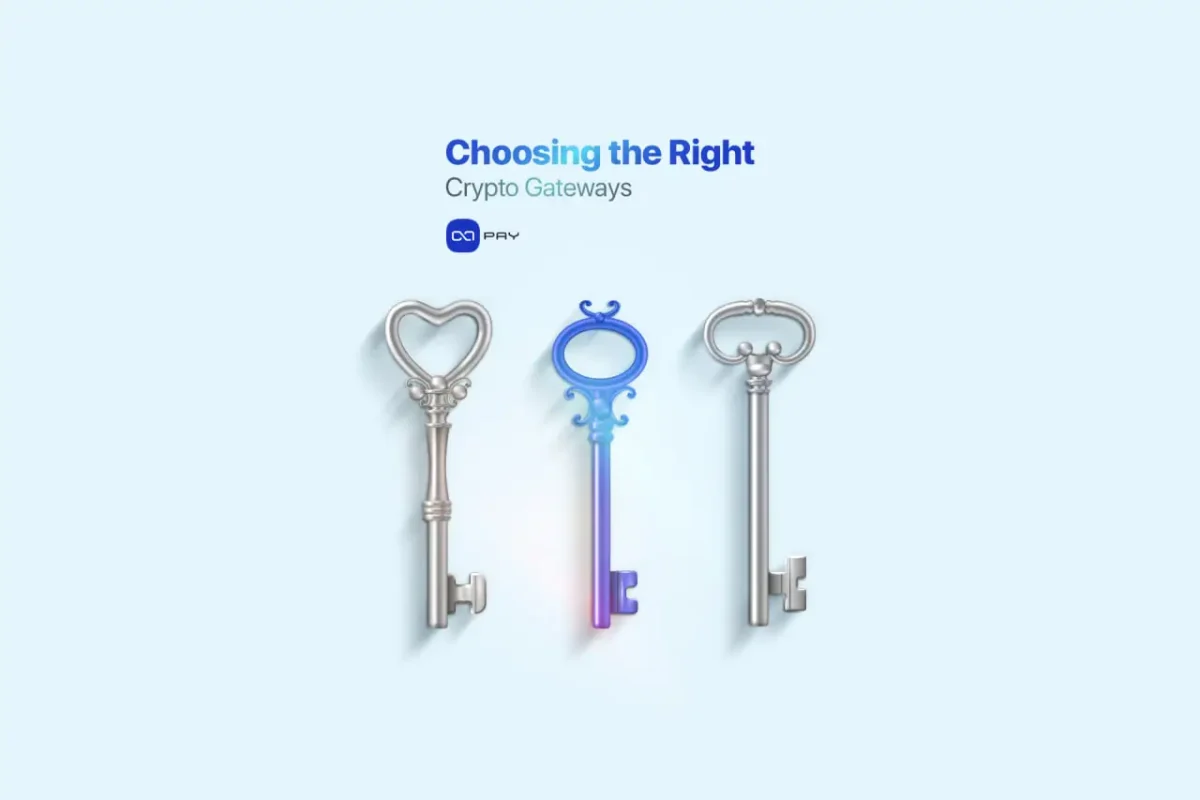
Choosing the Right Crypto Gateway
Crypto gateways vary widely in features and setup. Choosing the right one depends on how crypto payment gateways work with your technical, operational, and business needs.
Choose a gateway that aligns with your technical capacity, business model, and customer experience goals.
Common Questions About Crypto Payment Gateways
1. How do I accept payments via crypto?
To accept crypto payments, you need a crypto payment gateway like OxaPay that generates wallet addresses, tracks incoming transactions, and notifies your system. Understanding how crypto payment gateways work helps ensure you choose the right integration method, whether via API, plugin, or hosted checkout page.
2.What is the difference between a digital wallet and a payment gateway?
A digital wallet is used to store and manage your own crypto funds. A payment gateway, on the other hand, helps you accept crypto from others, generate crypto invoices, monitor transactions, and automate the payment process for your business.
3. Is it legal to accept crypto payments?
In most countries, accepting crypto is legal, but regulations vary. Some regions require registration or tax reporting. Always check the legal status in your jurisdiction before offering crypto payments.
4. How safe is a payment gateway?
A reliable crypto gateway uses blockchain confirmations, secure APIs, encrypted callback systems, and fraud protection tools to ensure transaction safety. Choose one with a strong security reputation and audit trails.
5. How to accept crypto payments anonymously?
Some gateways allow KYC-free onboarding and let you receive payments without linking your identity. However, this depends on local laws and whether you’re converting funds into fiat or holding crypto. OxaPay allows merchants to accept crypto payments without KYC.
6. What do you need for a payment gateway?
You typically need an account with the gateway provider, access to a dashboard or API, and a website or platform where customers can initiate payments. Some gateways also offer payment plugins for e-commerce systems.
7. How much does a payment gateway charge per transaction?
Fees vary by provider, but most crypto gateways charge between 0.4% and 2.5% per transaction. Some also pass on blockchain network fees, while others cover them internally depending on the service.
8. How to build a crypto payment gateway?
Building one from scratch requires deep knowledge of how crypto payment gateways work, including wallet generation, blockchain monitoring, and secure API design. It’s recommended only for developers or enterprises with technical infrastructure. Alternatively, some providers offer white label solutions, allowing you to launch a branded crypto gateway without building the backend yourself.
9. How are transactions confirmed and tracked within a gateway system?
Once a user sends a crypto payment, the gateway monitors the blockchain in real time, waits for confirmations, and updates the transaction status. Merchants can track this via dashboard, webhooks, or email alerts.
10. How to integrate a crypto payment gateway into my website?
Integration options include plugins for platforms like WooCommerce, API connections for custom sites, or hosted checkout pages. OxaPay supports all of these methods, including white label integration and Telegram-based tools, making it suitable for both developers and non-technical users.
11. Which crypto payment gateway is easiest to use?
Gateways that offer hosted payment pages, pre-built plugins, and no KYC onboarding are generally easier for beginners. Look for simplicity in setup and clarity in documentation. OxaPay provides all of these features, along with step-by-step integration guides, flexible options for both developers and non-technical users, and 24/7 technical support to assist with any implementation challenges. This makes it a highly accessible choice for businesses of all sizes.
12. How do businesses record crypto payments in their accounting?
Most businesses treat crypto payments as revenue and record them in their accounting systems, either based on fiat value or as crypto assets. Payment gateways like OxaPay offer exportable reports, transaction logs, and integration support to simplify compliance and tax filing.
Final Thoughts
A crypto payment gateway simplifies crypto transactions by handling them directly, reducing costs, increasing speed, and improving reliability across digital commerce. By aligning with how crypto payment gateways work, businesses can automate payment flows, gain better control over assets, and expand globally without the limitations of traditional systems. The right gateway turns crypto acceptance from a technical challenge into a strategic advantage.
Start Accepting Crypto with OxaPay
Accept crypto payments with OxaPay, no KYC, fast setup, and full control. Get your Merchant API key, pick an integration method, and start receiving Bitcoin, USDT, Ethereum, and more with real-time tracking and built-in tools.
👉 Visit the OxaPay crypto payment gateway and activate your crypto payment system in minutes.
